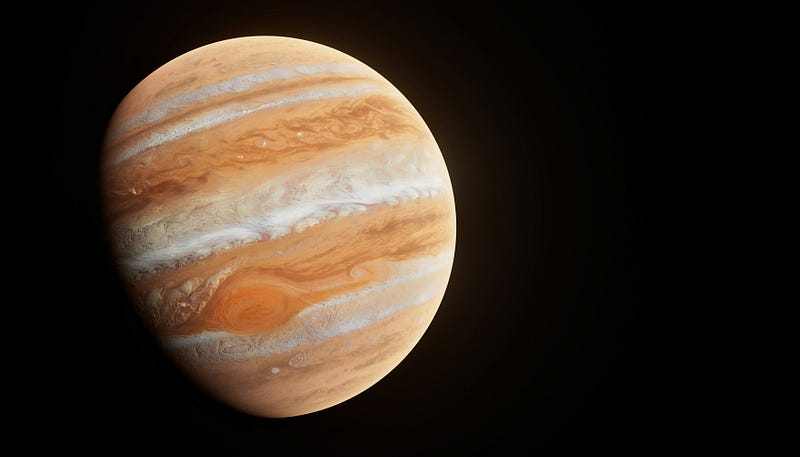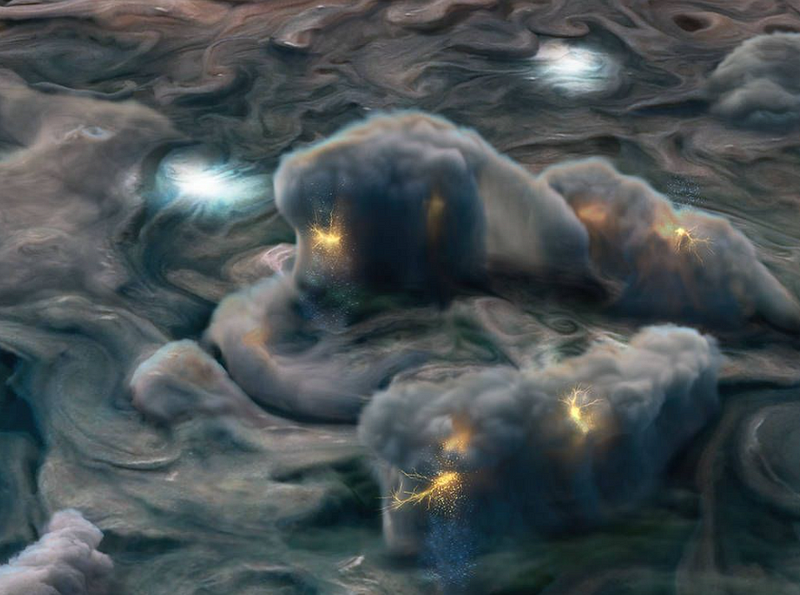The Great Red Spot: Jupiter's Enigmatic Storm and Its Secrets
Written on
Chapter 1: The Great Red Spot Unveiled
The Great Red Spot, a colossal storm on Jupiter, has fascinated scientists and space enthusiasts alike for centuries. This massive storm, the largest recorded in our Solar System, is so vast that it could easily consume Earth. Recently, however, observations have indicated a peculiar change: the Great Red Spot is not only shrinking but also transforming in unexpected ways.

The Shrinking of the Great Red Spot
The Great Red Spot has been gradually decreasing in size for over a century. Once more than three times wider than Earth, it now measures approximately 15,000 miles in diameter and continues to weaken. This notable change has captured the attention of researchers around the globe. The storm's shape and coloration have also evolved; what was once an oval has transformed into a more circular form.
Scientists attribute these alterations to various chemicals, such as ammonia and hydrocarbons, present in Jupiter’s upper atmosphere. Some hypotheses suggest that interactions with other atmospheric features, including jet streams and mid-sized storms, influence the Great Red Spot's dimensions and shape. This decline raises questions about the future of this iconic storm and its role in Jupiter's atmospheric dynamics.

Unusual Atmospheric Phenomena
Jupiter's atmosphere is remarkably complex, especially when compared to Earth's relatively thin atmosphere. Jupiter's atmosphere is characterized by belt zones, cyclones, and powerful east-to-west winds that give rise to the Beller's cloud system. Notably, researchers have identified regions with elevated ammonia concentrations in the troposphere, thanks to data from NASA’s Juno probe.
These ammonia-rich areas extend from the planet's depths to the upper cloud levels, causing ammonia to rise and fall in a manner similar to certain wind patterns on Earth, such as the Hadley cells. Jupiter, being significantly larger, features eight such patterns, which help form its vibrant bands and potentially impact the Great Red Spot.
The Role of Vertical Wind Cells
The vertical wind cells play a crucial role in shaping Jupiter’s atmospheric structure. Known as Ferrel cells on Earth, these wind patterns govern air movement from the surface upward and contribute to various weather phenomena.
In a contrasting manner, Jupiter's wind patterns extend much deeper into its gaseous atmosphere. This depth may slow wind circulation in circular motions, leading to the formation of unusual ammonia columns. As ammonia rises, it cools rapidly, resulting in the creation of extremely cold clouds. The surrounding air, now depleted of ammonia, descends, forming columns with varying ammonia concentrations.
The Mystery of Mush Balls
Another fascinating aspect of Jupiter's storms is the formation of "mush balls." These unique entities emerge during thunderstorms when hail carries large quantities of water ice crystals high into the atmosphere.

These ice crystals encounter ammonia vapor at high altitudes, remaining in a liquid state despite the freezing temperatures. As these mush balls accumulate layers of slush and ice, they grow heavier until the upward forces can no longer support them, causing them to fall.
As they descend, they enter warmer regions and evaporate due to the heat. Scientists believe that mush balls significantly influence Jupiter’s weather patterns, contributing to lightning and the distribution of ammonia. Understanding mush balls is vital for deciphering Jupiter's atmospheric processes and how they differ from Earth's climate systems.
Exploring Jupiter’s Deep Atmosphere
At the uppermost layer of Jupiter’s atmosphere, clouds of ammonia hover at frigid temperatures around -240°F, while descending into the mid-layer reveals temperatures of -173°F. Winds can reach staggering speeds of up to 425 mph, creating a chaotic environment akin to dancing on a leaf in a hurricane.
As one descends deeper, pressure escalates dramatically, resulting in conditions comparable to being 100 fathoms underwater on Earth, but exacerbated significantly. Breathing normal air under such pressures would lead to life-threatening conditions like oxygen toxicity and nitrogen narcosis.
As light struggles to penetrate Jupiter’s dense cloud cover, darkness intensifies. The increasing pressure slows movement, akin to traversing through thick molasses. Eventually, one encounters conditions where hydrogen gas transitions into liquid metallic hydrogen, a crucial element in Jupiter’s structure and magnetic field.
The Core of Jupiter
Recent research suggests that Jupiter may not possess a solid core as previously thought. Instead, it likely houses a mixture of rock, ice, and metallic hydrogen. This unique form of hydrogen, created under extreme pressure and temperature, conducts electricity, which is essential for generating Jupiter’s magnetic field.
The core experiences pressure far beyond what is found on Earth, with temperatures exceeding those on the surface of the Sun, facilitating the formation of metallic hydrogen. The ongoing analysis of Jupiter's core and its functions continues to be an area of active research.
The Future of the Great Red Spot
While predicting weather patterns remains uncertain, it is clear that the Great Red Spot is a longstanding mystery with an unpredictable future. Over the last century, this storm has gradually diminished, shrinking from a size that could accommodate three Earths to one that fits just one.
Recent observations indicate that wind speeds surrounding the Great Red Spot have surged by roughly 8% from 2009 to 2020, despite the storm’s contraction. This suggests that the storm may not be fading away but could potentially grow before further decline. If the Great Red Spot were to vanish, it might drastically alter Jupiter’s atmospheric conditions, possibly giving rise to new storms and reshaping regional climates.
Conclusion
The ever-evolving Great Red Spot continues to captivate both scientists and the public. With ongoing data collection from the Juno spacecraft and other missions, our understanding of this monumental storm is continually refined. The persistent fluctuations in the size, shape, and behavior of Jupiter's Great Red Spot prompt questions about the underlying weather systems that govern the planet's atmospheric dynamics.
In this video, scientists discuss the peculiarities of Jupiter's Great Red Spot, shedding light on the strange happenings within this colossal storm.
This video explores the ongoing mysteries surrounding Jupiter's Great Red Spot and its evolving dynamics, providing insights from recent research and observations.